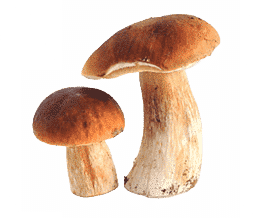Psilocybin, a naturally occurring compound found in over 200 species of mushrooms, has captured the attention of both scientists and mental health professionals in recent years. While its hallucinogenic effects have been known for centuries and celebrated in many indigenous cultures, modern research is now uncovering psilocybin’s extraordinary ability to structurally remodel the brain.
With promising applications in treating depressive disorders and other mental illnesses, psilocybin may redefine how we approach mental health.
A Historical Perspective on Psilocybin
For millennia, psilocybin has been intertwined with human culture. Ancient cave paintings in Algeria’s Tassili n’Ajjer, dating back 9,000 years, depict shamans with mushrooms sprouting from their bodies—evidence of early psychedelic experiences. Across continents, from North and South America to Europe and South Asia, psilocybin has been revered in spiritual practices and rituals.
Today, the narrative around psilocybin is evolving. While it was once dismissed as a recreational drug, modern science is unveiling its potential as a therapeutic powerhouse. Beyond the psychedelic “magic trip,” psilocybin is emerging as a tool to promote mental and physical well-being, especially through microdosing practices.
Psilocybin’s Impact on Neural Plasticity
Recent studies, such as the groundbreaking research by Shao et al. (2021) at Yale University, have illuminated psilocybin’s effects on neural structures. The study demonstrated that psilocybin promotes rapid and sustained growth in neural networks in the frontal cortex of mice—a finding with profound implications for treating mental illnesses like depression, OCD, and addiction.
How Psilocybin Rewires the Brain
The brain’s neural networks often become rigid with age, limiting our ability to adapt, learn, and think creatively. Psilocybin appears to counteract this stagnation by encouraging the formation of new neural connections.
Dendritic Spines and Arborization
Psilocybin significantly increases the density and size of dendritic spines—tiny protrusions on neurons responsible for transmitting signals and storing memories. This increase in dendritic spine density is a cornerstone of neural plasticity, facilitating improved memory storage and interconnectivity.
Moreover, psilocybin enhances dendritic arborization, the branching of neural “trees.” This process expands the brain’s capacity for neurotransmission and interdisciplinary problem-solving, fostering creativity and adaptability.
Persistent Structural Changes
The study by Shao et al. revealed that the structural changes induced by psilocybin were not fleeting. Even a month after a single dose, mice exhibited sustained increases in dendritic spine density and size, indicating long-term remodeling of neural structures.
This persistence is a game-changer for mental health treatments. Unlike traditional antidepressants, which provide temporary symptom relief without altering the brain’s structure, psilocybin promotes lasting neural growth, allowing the brain to heal and adapt naturally.
Psilocybin and Depression
Depressive disorders are often associated with synaptic atrophy in the prefrontal cortex, reduced dendritic arborization, and dampened neurotransmission. Psilocybin directly addresses these issues by:
- Restoring synaptic connections in the frontal cortex.
- Increasing the amplitude and frequency of neurotransmission.
- Encouraging the brain to break free from rigid, negative thought patterns.
Unlike conventional antidepressants, which can be addictive and offer only short-term relief, psilocybin fosters new neural pathways. This reorganization allows patients to gain fresh perspectives and find long-lasting solutions to mental health challenges.
A New Era in Mental Health Treatment
The U.S. FDA’s designation of psilocybin as a “Breakthrough Therapy” has accelerated clinical trials and research, bringing the compound closer to mainstream acceptance. Studies from 2016 to 2019 have further validated psilocybin’s potential to transform mental health care.
Psilocybin-induced neural plasticity primes the brain for integrating new psychological experiences, supporting the storage of lifelong memories and facilitating healing. Its ability to rewire the brain provides hope for those suffering from chronic mental illnesses, offering a path to recovery that is both effective and enduring.
The Future of Psilocybin
As the practice of microdosing gains traction, psilocybin’s applications are expanding beyond traditional therapy. Its capacity to repair atrophied memory banks, foster creativity, and promote neural growth positions it as a revolutionary tool in mental health care.
With growing global interest and continued research, psilocybin is on the brink of a medical renaissance. By blending ancient wisdom with modern science, we are beginning to understand the profound connections between psilocybin, the brain, and human well-being.
Learn more with Mind Mend. Reach out to us!
References
Shao, L. X., Liao, C., Gregg, I., Davoudian, P. A., Savalia, N. K., Delagarza, K., & Kwan, A. C. (2021). Psilocybin induces rapid and persistent growth of dendritic spines in frontal cortex in vivo. BioRxiv.





